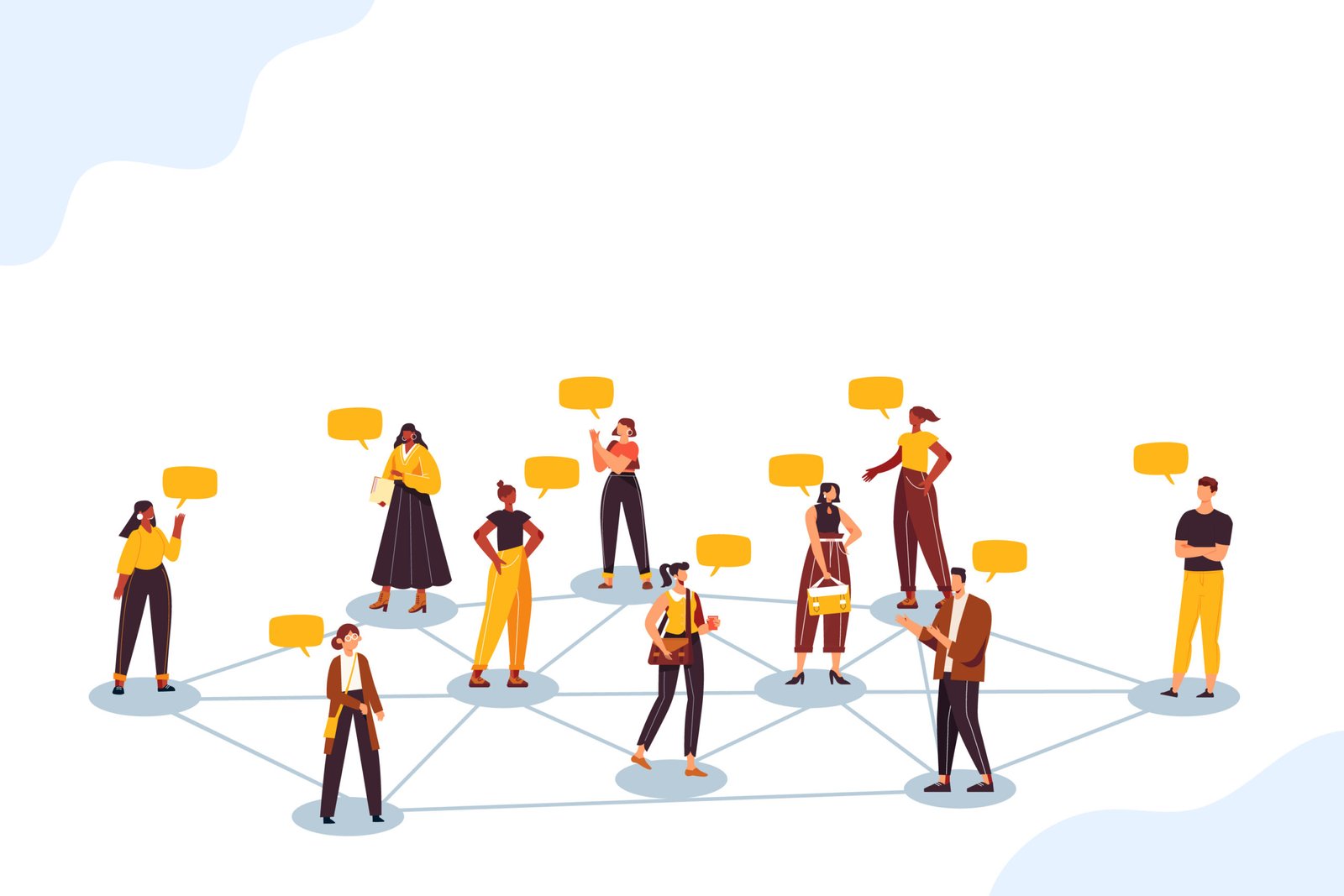In the vast expanse of the digital realm, few phenomena have shaped our lives as profoundly as social networking. From connecting with friends and family to revolutionizing how we consume information, social networking platforms have become the beating heart of the internet age. But what exactly is social networking, and why does it hold such sway over our daily interactions? Let’s embark on a journey to unravel the intricacies of this modern marvel.
Social networking refers
At its core, social networking refers to the use of dedicated platforms and applications to facilitate the creation and exchange of user-generated content, as well as fostering connections between individuals and communities. These platforms serve as virtual arenas where people can share thoughts, ideas, media, and experiences in real-time, transcending geographical boundaries and temporal constraints.
Social networking traces its roots back
The concept of social networking traces its roots back to the early days of the internet, with platforms like Six Degrees, launched in 1997, laying the groundwork for what was to come. However, it wasn’t until the emergence of platforms like Friendster, My Space, and eventually Facebook that social networking truly began to permeate mainstream culture.
Today, social networking encompasses a diverse array of platforms catering to various niches and interests. From the all-encompassing reach of Facebook to the visual allure of Instagram, the ephemeral charm of Snapchat, and the professional networking prowess of LinkedIn, there’s a social networking platform for virtually every facet of human interaction.
Social networking is its emphasis
One of the defining characteristics of social networking is its emphasis on user participation and engagement. Unlike traditional media channels where content is created and disseminated by a select few, social networking platforms empower users to become active participants in the creation and sharing of content. Whether it’s posting status updates, sharing photos and videos, or engaging in discussions, users play a central role in shaping the collective narrative of the digital landscape.
Furthermore, social networking has democratized the dissemination of information, giving rise to the phenomenon of user-generated content. No longer reliant solely on traditional media outlets, individuals now have the ability to amplify their voices and reach audiences on a global scale. This democratization of content creation has fueled the rise of influencers, individuals who wield considerable influence and sway over their followers, often leveraging their platforms for marketing and promotional purposes.
Moreover, the unchecked spread of misinformation and fake news on social networking platforms has undermined trust in traditional sources of information and fueled polarization and division within society. The rise of echo chambers and filter bubbles, where individuals are exposed only to content that reinforces their existing beliefs and biases, has further exacerbated these challenges, hindering meaningful discourse and understanding.
Social networking continues to evolve and adapt
Despite these challenges, social networking continues to evolve and adapt, shaping and reflecting the dynamics of our interconnected world. From the emergence of new platforms and technologies to the ongoing quest for greater inclusivity and accessibility, the future of social networking holds both promise and uncertainty.
As we navigate this ever-changing landscape, it’s essential to approach social networking with a critical eye and a discerning mind. By being mindful of the implications of our online interactions and advocating for policies that safeguard privacy and promote digital literacy, we can harness the transformative potential of social networking to build a more informed, connected, and inclusive society.
Conclusion
In conclusion, social networking is more than just a collection of digital platforms—it’s a reflection of our innate desire to connect, communicate, and collaborate in an increasingly interconnected world. By understanding the underlying mechanisms and dynamics of social networking, we can harness its power for positive change and forge meaningful connections that transcend the boundaries of space and time.
FAQ
1. What is social networking?
Social networking refers to the use of online platforms and applications to connect with others, share content, and engage in various forms of communication. These platforms facilitate the creation and exchange of user-generated content, fostering connections between individuals and communities regardless of geographical location.
2. What are some popular social networking platforms?
There is a wide range of social networking platforms catering to different interests and demographics. Some of the most popular ones include:
- Facebook: A general-purpose platform for connecting with friends, family, and colleagues, sharing updates, photos, and videos.
- Instagram: A visual-centric platform focused on sharing photos and videos, often with a focus on aesthetics and storytelling.
- Twitter: A microblogging platform where users can share short messages, called tweets, with their followers, and engage in public conversations.
- LinkedIn: A professional networking platform designed for job seekers, recruiters, and professionals to connect, network, and share industry insights.
- Snapchat: A multimedia messaging app known for its ephemeral nature, allowing users to share photos and videos that disappear after viewing.
3. How does social networking impact society?
Social networking has had a profound impact on society, influencing how we communicate, consume information, and interact with one another. It has democratized the dissemination of information, allowing individuals to amplify their voices and connect with global audiences. However, it has also raised concerns about privacy, data security, and the spread of misinformation.
